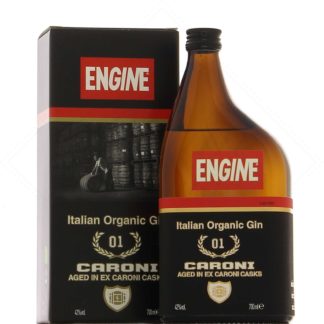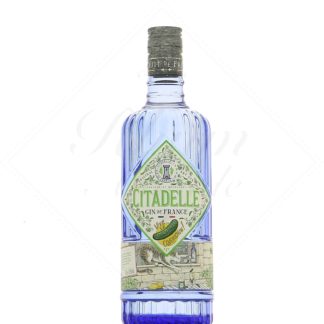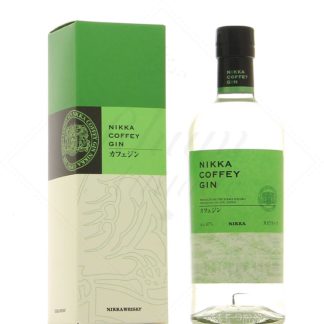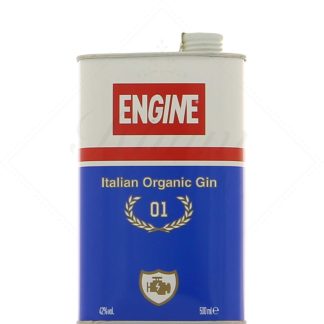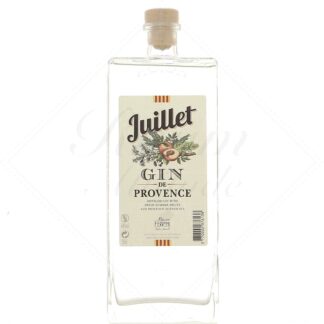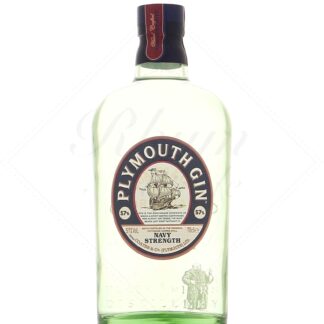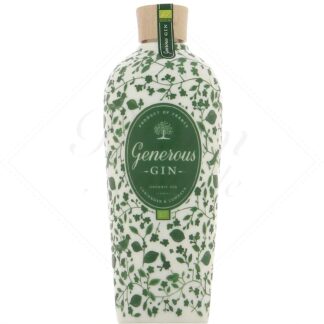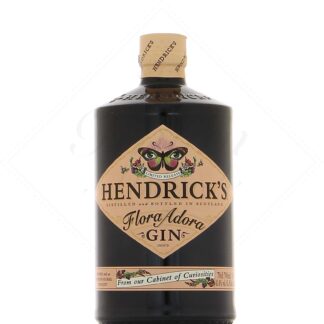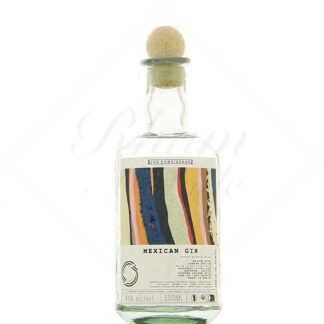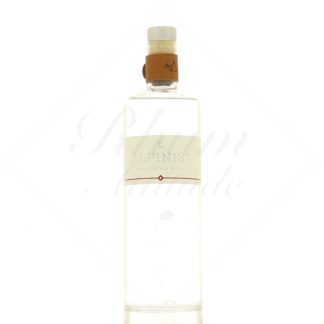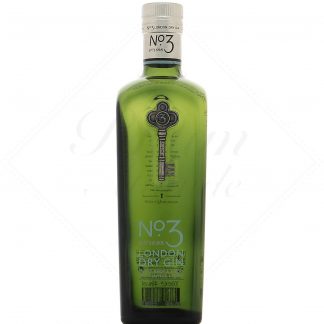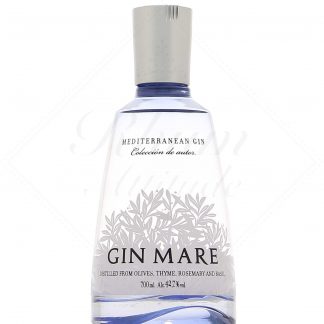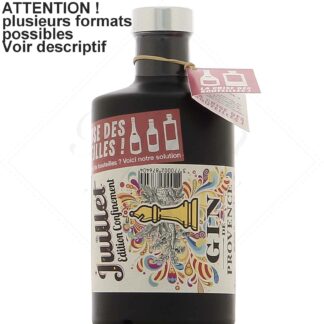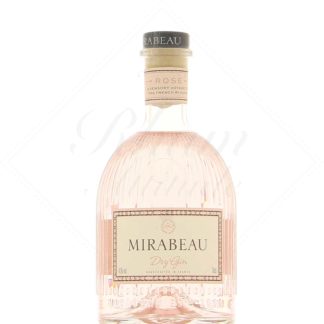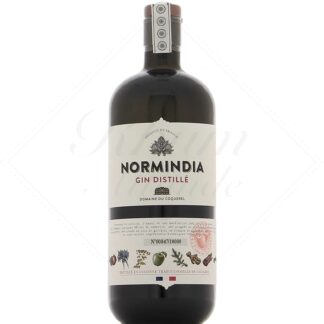Gin
The history of gin
Juniper berries, the source of gin's distinctive aroma, have been part of human pharmacopoeia since time immemorial (at least since the Romans). We know for a fact that in the 11th century, monks distilled juniper berries that had been macerated in wine. The first official mention of a drink called "Genièvre" (genever) dates from the 13th century. In the 14th century, it was thought that genever protected against the plague (this turned out to be wrong...). The oldest surviving recipe was published in the 16th century.
The most direct ancestor of today's gin appeared in 17th-century Holland. At that time, alcohol or malted barley wine was redistilled, along with juniper, aniseed and coriander. This was the genever still known today in Holland, Belgium (where it's called "peket") and France. It was most often sold in pharmacies to treat stomach or kidney problems.
Gin conquers Europe
During the Anglo-Dutch wars, British soldiers discovered genever, which they nicknamed "Dutch Courage". They themselves became fond of the spirit, which they took with them on their return home. Genever soon became popular in England, where it took the name of gin (an abbreviation of genever). It is now distilled from pure grain alcohol rather than wine. Turpentine is often added, giving it resinous notes and even more bitterness.
At the end of the 17th century, English gin underwent a veritable explosion when the crown imposed heavy taxes on foreign spirits (notably French brandies) to discourage their importation. At the same time, the industry was deregulated, and distillation was widely authorized without a license. What's more, gin was an excellent outlet for low-quality malts not good enough for beer, and large quantities were happily sold.
England, the home of gin
What became known as the "gin craze" followed, with thousands of gin shops opening across the country. Although beer remained popular, gin competed with it, particularly among the poorer sections of the population. Its low price and rapid intoxication quickly led to social problems, and to the first gin law in 1736. The law introduced prohibitive taxes, which in turn led to fierce protests and even riots. Abandoned in 1742, it returned in 1751 in a different form. Distillation and distribution were henceforth regulated and restricted to licensees in the sector.
From the end of the 18th century, "Old Tom" dominated the market, and continued to do so until the end of the 19th century. This is a watered-down gin, often to mask its uncertain quality. In the mid-19th century, the distilling column revolutionized the world of spirits. This marked the advent of a drier, lighter style, less concentrated in juniper than its Dutch cousin: London Dry.
The birth of Gin Tonic
At the same time, malaria was wreaking havoc in the English colonies, particularly in India. To combat the disease, quinine was used to make tonic water. This quinine has an extremely bitter taste, to the point of being almost undrinkable. A little gin is added to improve the taste and make it last a little longer. This was the genesis of a great cocktail classic: the Gin Tonic.
Gin enjoyed its heyday in the 1950s and 1960s, led by Dry Martini. It went out of fashion in the 1970s in favor of vodka, and enjoyed a revival in the late 1980s with the appearance of Bombay Sapphire. New cocktails, new methods, new aromatics and spices are all devoted to it. It's a source of creativity on all fronts.
In 2013, we are witnessing a new boom, in the wake of the micro-distilleries that are springing up all over the world. Gin is often the first spirit produced by these distilleries, as it requires neither direct agricultural matter nor aging. Gin Tonic is once again king, reigning over the summers of the 2010s.
Gin production
Gin is a spirit flavored mainly with juniper (genus juniperus). This flavoring is the only one required by regulations, and its taste must dominate. A wide range of herbs and spices can also be used. Coriander seed, fennel seed, cumin seed, citrus peel, angelica root or iris root are often used.
It is always made from neutral alcohol (96%), in which the taste of the raw material is no longer present. These are usually grain spirits, but can also be molasses (from sugar cane or beet). The distiller's main task is then to flavour the gin. The trick is to extract the best possible essential oils from each spice or aroma.
Flavouring
Simple aromatization by maceration can be used, but the highest-quality gins are obtained by redistillation. Two techniques are possible:
- Maceration of alcohol and botanicals with water in the alembic tank, followed by distillation (a maceration period may be observed before distillation). The spices can either be placed in the vat as they are, or in a cloth, like a large tea bag. The result is a gin with a powerful aroma.
- The botanicals are infused in a basket located in the still's swan neck. It's simply the alcohol vapors that come into contact with the spices on their way to the condenser. The result is lighter, more delicate gins. Another, rather similar, method is the use of a "Carterhead" alembic (invented by John Dore in the 1960s), with a small column equipped with a copper compartment for the aromatics.
Botanicals can be distilled all at once, in groups, or even individually. In most cases, they are distilled together, and an aromatic may be distilled individually so that its aromas are particularly noticeable after blending. More rarely, the distiller chooses to treat each botanical individually, blending them at the end.
We sometimes come across what we call "Double Gins", in which a first distillation is carried out with one group of botanicals, followed by a redistillation with another.
After distillation
After distillation, the gin is rested in stainless steel tanks, before the alcohol content is reduced as slowly and gently as possible. Distilled, spring or osmosis water is used for this. At bottling, gin must have a minimum alcohol content of 37.5%. Although we're beginning to see a little wood ageing, aging is by no means the rule.
The different categories of gin
Gins can be divided into three main categories, with a few additional names:
- Gin or compound gin. It is made with essences, aromas or maceration in neutral alcohol, but without redistillation. This is the "basic" gin found in supermarkets.
- Distilled gin. After maceration or infusion, it is re-distilled by batch and still. Flavours may be added after redistillation.
- London Dry. The term refers to a style, not an appellation of origin. This gin is obtained only after batch redistillation in a still. Its alcohol content must be over 70%. No sweetening is allowed (or very little, since it is limited to 0.1 grams per liter).
Then there are a few secondary names such as :
Old tom. An old style of gin that has the particularity of being watered down.
Sloe Gin. A liqueur based on gin and sloes, between 15 and 30% alcohol.
Plymouth Gin. Produced exclusively at the eponymous distillery, this is a kind of "Navy Gin". Like Navy Rum, it's a potent spirit, bottled to the degree beyond which gunpowder carried in ships could still burn even after being soaked in alcohol.
Gins and their uses
Gin is one of the most fashionable of spirits. It is now made all over the world, and artisan distilleries have made it their specialty. The cocktail boom of recent years has given rise to a taste for bitter flavors, of which Negroni and Gin Tonic are excellent ambassadors.
Here are the recipes for these iconic cocktails
Negroni
Fill an Old-fashioned glass with ice cubes and pour :
- 3cl Gin
- 3cl Campari
- 3cl Red Vermouth
Stir and garnish with orange zest
Gin Tonic
Fill a large Copa glass with ice cubes and pour :
- 6cl Gin
- 15 cl Tonic
Garnish with a slice of lemon or cucumber.
For example, we can recommend Monkey 47, which, as its name suggests, comprises 47 different botanicals. Ki No Bi, distilled in Kyoto, Japan, is one of those that can be enjoyed neat. You can also discover the Mediterranean flavors of Mare Spanish gin, or Kreyol by Juillet, on a rum base. Citadelle is a French gin created by the Ferrand cognac team, also behind the Plantation range of rums. Read less
-
-
-
-
-
-
-
-
-
-
-
-
-
Ferroni Gin July 44° lockdown edition Limited edition The bottle crisis
- Mainland France
- 44 ° - 50 cl
-
-
-
